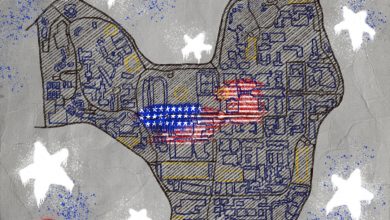Secretaries No More
This month, NBC’s Ann Curry sat down with Fran Moore, the CIA’s Director of Intelligence, and Sue Gordon, the Director of Support for America’s global network of spies.
The topic of their interview: how the environment of the Central Intelligence Agency has changed over the last few decades for women.
Just 20 years ago, there were no women occupying positions in the upper ranks of the CIA. Today, according to NBC, “three of the top four officers and five of the top eight are women.” Furthermore, the role of Deputy Director is now filled by Avril Haines. Nominated by President Obama, she is the first woman in history to hold this position.
Historically, the CIA has employed more women than many private companies.
NBC reported, “In the 1950s, when the payrolls of private companies were 30 percent female, the CIA’s tally was 40 percent.” However, for the majority, the executive and undercover ranks were considered off-limits for females.
Flash-forward to the 1990’s when the overall employment of women in the CIA was still at 40%, but only 10% of the higher echelon positions were filled by women – the number being even lower for positions in the clandestine services.
Today, that number has increased to 46%.
“Among the agency’s actual spies – the undercover operatives in the National Clandestine Service — the figure has risen to 40 percent.” Women in the CIA are now occupying more critical positions – doing everything from leading “targeting teams” to locate Osama bin Laden, to serving as station chiefs in sensitive sites.
However, despite this increase in numbers, there are also obstacles for women in the CIA – one most notably being the male-dominated culture. Sue Gordon, the CIA’s Director of Support, recalled a particular interaction with her male colleagues during one of her first assignments in the clandestine service:
“I was selected to go to an assignment in the field that involved some physical exertion,” she said. “We went into a small room, and there was a suitcase sitting in the corner. There were four of us, three guys and me. And they said, ‘Pick up that suitcase,’ to me.”
“And then [one of the men] said, ‘Can you carry it up five flights of stairs with 70 pounds of equipment on your back?’ And I said, ‘I’m pretty sure I can.’ And he said, ‘Well, OK.’ And I’m like, ‘Are you gonna ask the guys?’ And he’s like, ‘No, I’m pretty sure they can.’ I’m like, ‘No way. Fred no way can carry that upstairs.'”
In addition to men questioning female colleagues ability to withstand the physical exertion required in the clandestine service, women in the CIA also faced discrimination based on whether or not they wanted children.
Director of Intelligence Fran Moore, commented: “Marriage by itself was not an issue…But if you intended to have children then maybe you wouldn’t be able to give your all. And it became clear to me that there were more subtle issues like that.”
Fortunately, as more women have continued to rise in the ranks of the CIA, the surrounding culture has begun to change. Most notably, the inclusion of women in the CIA has been cited as improving the agency’s work and life balance – which, in the long run, benefit male and female employees. Fran Moore noted:
“It’s a collaborative effort to do the work, but it has to be a collaborative effort to make the work/life balance work too…So if you have to go pick up your child, we need to make sure there’s somebody else that can stay — to make sure that your piece gets through the product-review process before it ends up on the president’s desk tomorrow.”
This collaborative effort has had a positive impact on the success and efficiency of the CIA as well. Most recently, the finding and capture of Osama Bin Laden, as well as other notable al Qaeda leaders, were led by what are known as the “Sisterhood” of al Qaeda specialists.
The current CIA director, John Brennan, also noticed the increased efficiency and effectiveness of the agency due to having a diverse group of people working under him. Quoted by the Huffington Post, Brennan stated:
“Women make us better. Minorities make us better. People with diverse experiences make us better,” he told Curry. “I am so pleased to be able to look around the conference table in the morning and see individuals who represent the best of what this agency has to offer. And more and more of those faces are the faces of women.”




